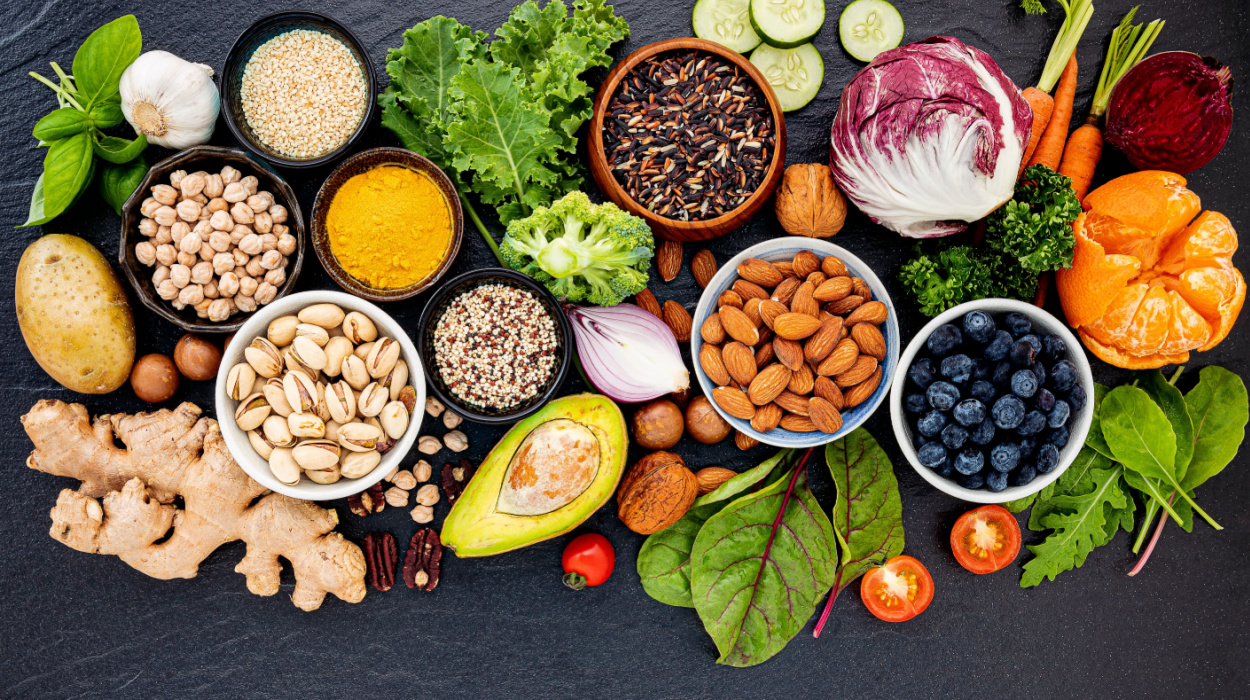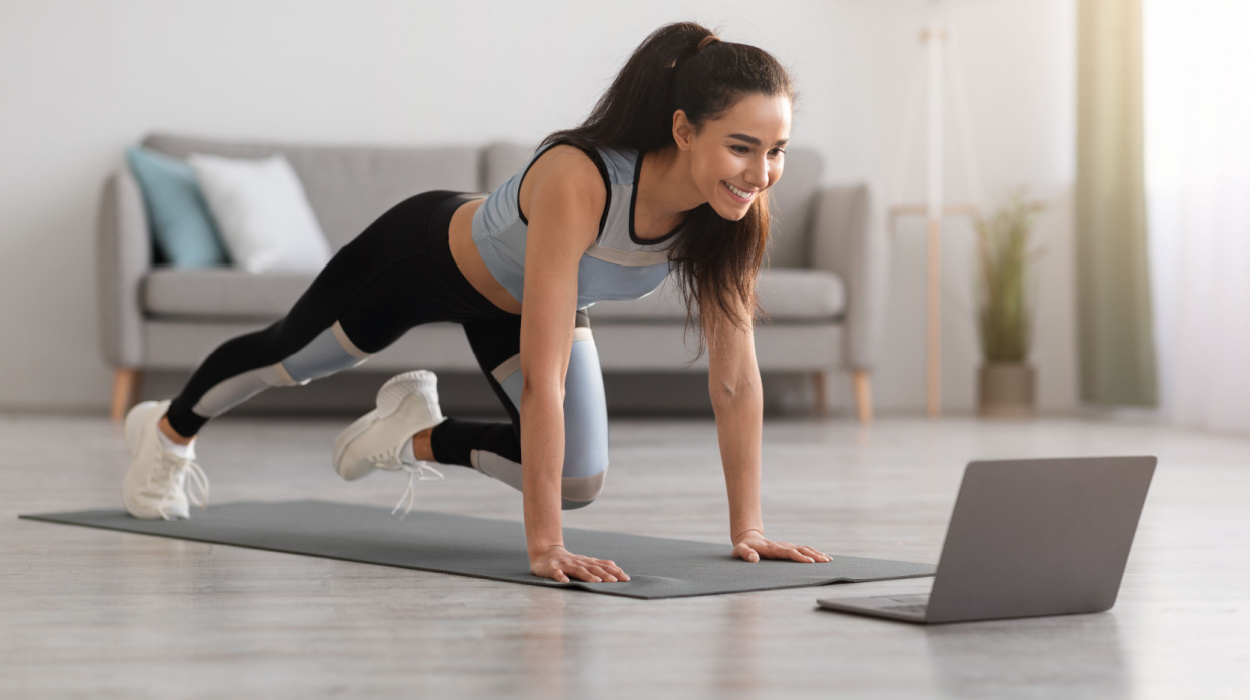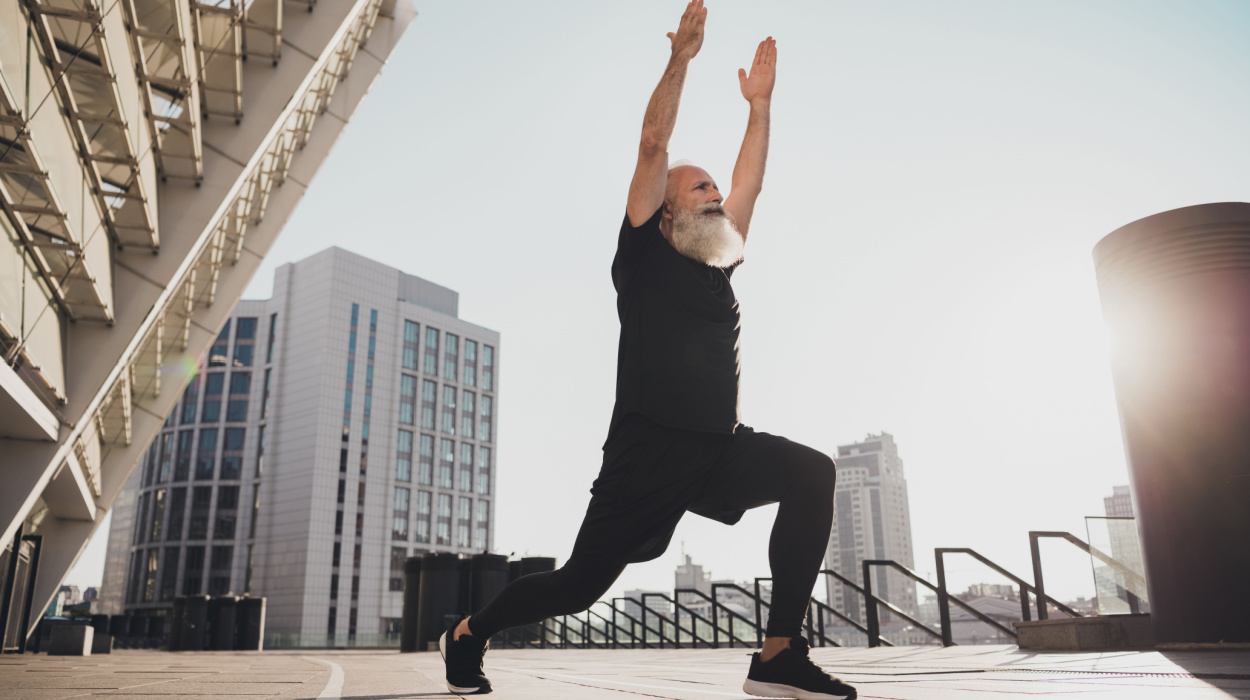After age 50, both men and women experience profound changes, leaving many feeling like they have lost control of their bodies. These changes frequently result in a quick increase in belly fat.
The abdominal fat accumulation is primarily driven by fluctuations in testosterone[1] hormone levels in males and estrogen[2] in women. Reduced levels of these hormones in the body, combined with a slower metabolism, limit muscle mass. As a result, there is more buildup of subcutaneous fat around the belly and increased visceral fat reserves deeper in the abdomen.
While visceral fat is necessary for protecting and insulating vital internal organs in the sensitive belly area, too much of it can be hazardous to your health. It has been linked to an increased risk of type 2 diabetes[3] and cardiovascular disease.
The following is a detailed guide on how to lose belly fat after 50 and achieve long-term health benefits.
How To Lose Belly Fat Over 50
You can actively burn through midsection fat deposits by doing the following:
- Maintaining a clean diet.
- Alternating high-intensity exercises such as aerobics and strength training.
- Adopting healthy sleeping habits.
- Proper hydration.
- Reducing alcohol intake and giving up smoking.
- Stress management.
Combining these activities with lifestyle changes and consistently implementing them over time result in a healthy level of belly fat.
How To Lose Belly Fat After 50
There isn’t much that can be done about the body’s inability to maintain hormone levels naturally after age 50. However, a few lifestyle changes can help aggressively burn belly fat while maintaining appropriate visceral fat levels. A reasonable exercise program, a healthy diet, stress management, limiting alcohol and drug intake, healthy sleep patterns, and regular hydration can all help to blast away hormonal belly fat.
Let’s take a closer look at each strategy.
Maintain A Clean Diet

Want to know how to lose belly fat after 50 years old quickly and practically? It all starts with mastering your diet.
A clean diet for decreasing body fat is balanced with healthy foods which prioritize lean proteins and fiber-rich meals. Such a diet should include plenty of veggies, whole fruits, healthy fats, and whole grains.
Processed foods with artificial sweeteners and salts are a few examples of foods to avoid in this category. Fast foods are likewise discouraged due to their high saturated fat content.
Fiber-rich foods such as avocados, oats, and lentils are crucial for a balanced diet. They take longer to digest, which creates a sense of fullness in the body helping to reduce snacking and promote appetite control.[4]
Lean proteins are recommended in large quantities for those wondering how to lose fat over 50 because older adults require more protein.[5] As we age, our bodies are subjected to more stress and have a reduced ability to digest proteins. Lean proteins should be consumed to increase bodily strength, lean muscle mass, and bone health.
Protein consumption of 1.2-1.5 grams[6] per kilogram (about 2.2 pounds) of body weight is advised for persons over 50.
Reduce carbs on your list of foods that burn belly fat. Although carbohydrates are beneficial to persons over the age of 50, older adults store excess carbs[7] more readily than younger people. Complex carbs, such as vegetables, fruits, and whole grains, are preferred since they are high in dietary fiber.
Get More Active

Many people struggle to lose weight when they are over 50. As we age, our bodies lose muscle mass,[8] and our metabolism slows dramatically. Exercise is vital for persons in this age group because it promotes lean muscle growth and increases metabolism.
It is critical to ease into a fitness plan and gradually integrate various dynamic activities to condition the body. You can also supplement this by generating opportunities for more movement, such as taking the stairs instead of the elevator or refusing to drive all the time in favor of brisk walks. Switching between intense workouts and strength training will help you maintain progress once you’ve established a routine.
High-Intensity Interval Training
A diverse approach to exercise is required for better weight loss results after 50 years. One exercise that actively works the core is high-intensity interval training. It alternates between short bursts of intense workouts and longer low-intensity workouts.
These workouts significantly raise the heart rate and body metabolism, resulting in a considerably faster calorie burn. Combining aerobics with high-intensity interval training can yield excellent results.
But how much cardio is recommended for people researching how to lose belly fat after age 50? The best cardio workouts for older individuals should include at least 75 minutes[9] of running, jogging, swimming, cycling, or hiking weekly. With these exercises, at a vigorous intensity, you should keep your heart rate between 142-172 beats per minute[10] at age 50 and adjust properly based on the CDC’s guidance as you get older.
Strength Training
Resistance training is also essential for shedding persistent abdominal fat after age 50. According to studies,[11] the average adult loses about 1% of muscle mass a year beginning in middle aged adults. This indicates that if an adult does not exercise regularly, they can lose 30% or more of their muscle mass over their lifetime.
Studies also reveal that muscles have a more active metabolism[12] than body fat. The Centers for Disease Control and Prevention recommends strength training at least twice a week[13] to prevent muscular deterioration. To avoid injuries, this should be done gradually and with guidance from a professional to help you choose appropriate workouts.
Be sure to choose strength training activities that involve the entire body in weight loss. This is because spot-reducing abdominal fat with strength training is nearly impossible. To achieve an evenly toned body and tummy, such workouts could include deadlifts, rows, planks, squats, crunches, burpees, and presses.
Before beginning an exercise and diet plan to lose belly fat, consult your doctor or a competent trainer. Such professionals will assist you in assessing your health needs and developing a long-term plan to achieve optimal health. Some will even recommend the best diet pills to supplement your weight loss efforts.
Good Sleeping Habits
Even if you eat well and exercise regularly, your efforts to lose belly fat can be hindered by irregular sleeping patterns. Adequate and consistent sleep cycles allow muscles to recover[14] faster from workouts. It energizes your mind and body, allowing you to commit to a healthy lifestyle.
Other research has linked poor sleeping habits to increased appetite,[15] hence unpredictable eating, which leads to weight gain. People who are sleep-deprived frequently have an increased calorie intake as a result of their desire to nibble on unhealthy meals with high sugar and fat content.
Throughout the day, hormones[16] such as leptin and ghrelin influence sensations of satiety and hunger. With a well-structured day, the body regulates these hormones, ensuring that you eat at the appropriate intervals. Without a consistent wake and sleep schedule, appetite regulation becomes difficult, resulting in erratic eating and weight gain.
Sleeping 7 to 8 hours[17] a day is recommended for older adults.
Proper Hydration
Water is just as important as the other remedies for losing abdominal fat. Water has no calories yet improves satiety, inhibits cravings, and boosts metabolism.[18] Water is also a beneficial workout aid because it cools the body and boosts performance, making workout sessions more efficient.
All of these elements are critical in effectively reducing belly fat after the age of 50. Hydrating regularly also enhances skin health,[19] allowing active older persons to age gracefully.
Limit Alcohol And Nicotine Consumption
You’ve heard of the term “beer belly.” The occasional beer or glass of wine has no immediate health risk, but frequent intake is linked to abdominal obesity[20] and weight gain in general. Alcohol abuse undermines all other efforts to lose belly fat, particularly stubborn subcutaneous fat.
Alcohol is discouraged because it contains a lot of empty calories, about seven calories per gram.[21] Empty calories provide no nutritious value to the body and are difficult to expel.
Alcohol is also extremely inflammatory to organs and disrupts vital bodily processes such as nutrient and fat synthesis. The body prioritizes removing hazardous alcoholic elements from the system at the expense of other functions, jeopardizing your general health.
Nicotine is also a contributor to weight gain. While nicotine[22] increases metabolism, quitting smoking drastically slows metabolism, resulting in less calorie burning. After stopping smoking, the result is significant weight gain.
Stress Management
According to experts, micro and moderate stress[23] is beneficial to your general health since it keeps the mind sharp and motivates performance. Prolonged stress, on the other hand, has an impact on both mental and physical health.
Those under a lot of stress tend to have excess belly fat because of their heightened cortisol[24] levels. Cortisol regulates metabolism and blood sugar and manages inflammation. Cortisol is also essential in the body’s fight-or-flight reactions.
While it is understandable that aging brings greater stressors, there are practical solutions. These include regular exercise, meditation, yoga, proper rest, mindful eating, and, in the worst-case scenario, seeking professional help.
Cortisol fluctuations result from a lack of effective stress management and coping mechanisms, which leads to stress eating. Comfort foods are a go-to for many stressed people because they activate the brain’s dopamine system[25] or pleasure points.
In addition to demotivating people and making them less productive, stress also causes sleep deprivation and fatigue. This makes people less likely to stick to an exercise regimen or prepare nutritious home-cooked meals.
The solutions presented are tried and true methods to lose weight after 50. But why is it so vital to maintain a healthy weight at this age? Continue reading to find out.
Why Should You Care About Belly Fat?
Abdominal fat cells produce toxins that are harmful to your health. Visceral fat has been linked to insulin resistance,[26] elevated total and LDL cholesterol, and decreased HDL cholesterol.
Visceral fat also stimulates cytokine[27] production, a protein that induces inflammation and increases the risk of chronic and cardiovascular diseases. Alzheimer’s disease, stroke, colorectal cancer, breast cancer, dementia, and asthma are all prevalent illnesses connected with belly fat.
Another reason to be concerned about excessive abdominal fat buildup, particularly deep-lying fat, is its proximity to the portal vein. This vital vein delivers blood to the liver directly from the intestines. Visceral fat secretions, such as free fatty acids,[28] enter the liver via the vein, increasing the production of dangerous blood lipids.
Bad cholesterol rises while good cholesterol falls as a result. It also increases the likelihood of insulin resistance.[29] This condition causes the liver and muscles to become unresponsive to normal insulin levels, reducing glucose absorption into the cells. It causes blood sugar levels to rise, which leads to diabetes.
Conclusion
You’ve probably heard of the term “middle age spread”, a phrase used to describe body fat that builds in the midsection of most adults in their forties and fifties. Although a rise in the proportion of fat to body weight is anticipated at this time, you don’t have to accept this as the new normal.
Even though losing weight can be difficult for older folks, it is highly feasible, especially with a well-planned exercise regimen. The tips shared in this post are ideal for anyone researching how to lose belly fat over 50. The main thing to remember is that consistency is vital to achieving long-term results, and moderation goes a long way toward keeping you healthy.
Frequently Asked Questions
Alternate high-intensity activities like cardio with strength training to burn belly fat effectively.
Yes. Although it may take longer for older folks to lose belly fat, a tight stomach is achievable with regular exercise, a healthy diet, adequate rest, proper hydration, and stress management.
Yes, but doing it alone will take longer. It also depends on other lifestyle changes, such as eating balanced meals high in fiber and protein, staying active, and avoiding excessive alcohol consumption.
As metabolism slows down at this age, muscles deteriorate more quickly. This leads to an increase in fat deposits, particularly in the abdominal section.
 Evidence Based
Evidence Based
